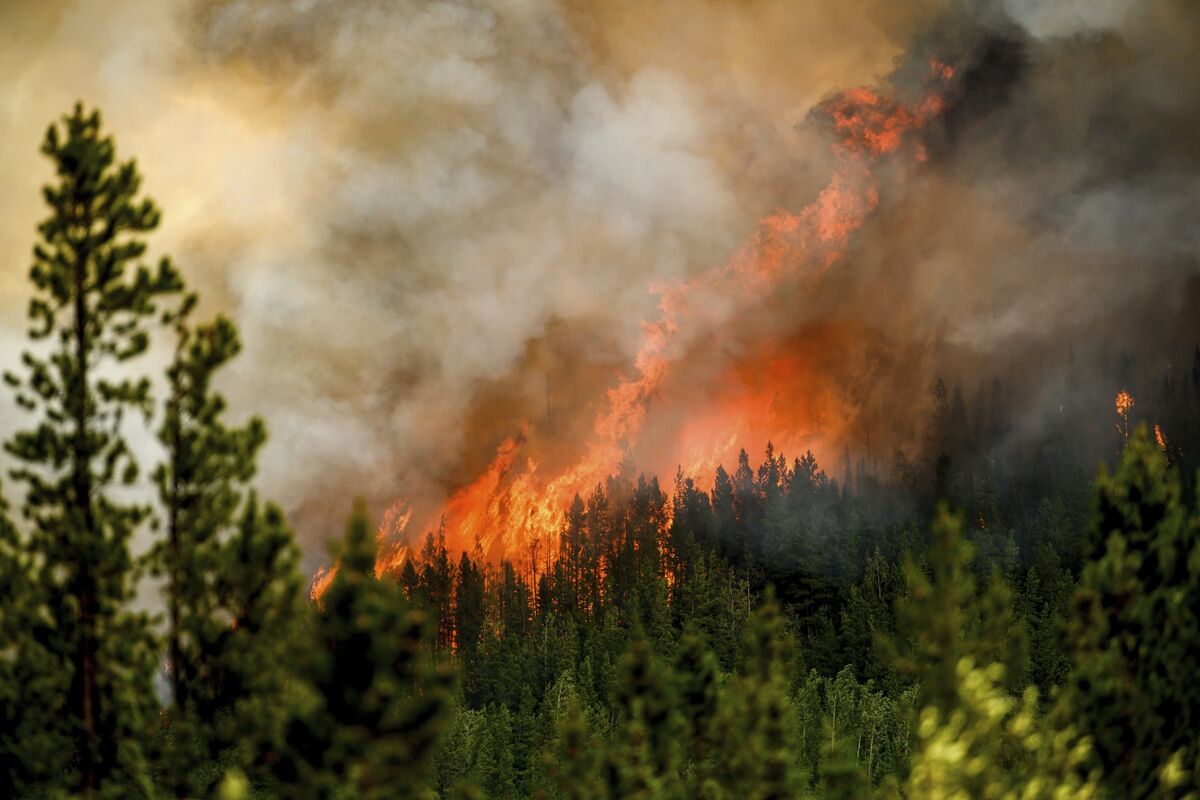
BISMARCK, ND (KXNET) — The recent winds that brought relief from cloudy skies and rain to western North Dakota have also ushered in a new threat in the form of smoke from ongoing Canadian wildfires. As a result, air quality levels have reached the “unhealthy” stage. EPA sensors located throughout North Dakota have detected high levels of particulates in the air, pushing the outdoor air quality into the “unhealthy” category, as reported by the official Air Now fire and smoke website.
The hazy skies caused by the smoke are evident in Bismarck and Minot, as well as other communities across western North Dakota, as captured by the KX Weather Cams. Individuals with respiratory issues are strongly advised to minimize their outdoor activities and exposure. The KX Weather Team anticipates some relief as gusty winds of up to 30 miles per hour are expected to help disperse the smoke, starting Saturday and gradually improving air quality by Sunday.
The smoke originating from the record-breaking Canadian wildfires poses a hazard to the respiratory health of individuals in the Northern Plains and upper Midwest regions this weekend. While triggering breathing problems for many, it also sheds light on the fact that over 5 million Americans lack convenient access to respiratory specialists, as reported by John Yang.
The prevalence of smoke during North America’s summer signals a potential future trend. With the relentless Canadian wildfires engulfing more than 8 million hectares of land, smoke has become a pervasive presence in the skies. The regular occurrence of these fires leads to prolonged exposure to smoke, raising concerns about the health consequences associated with inhaling these hazardous particles. Three experts share their insights on this matter.
Jeffrey Brook, an air pollution exposure scientist at the University of Toronto, explains that even from a distance of approximately 500 kilometers away, his office has experienced severely degraded air quality due to the noxious gases and minuscule burnt biomass particles. He describes the air as the worst particulate matter air quality he has witnessed in over three decades. Brook recollects his journey to the eastern end of Lake Ontario, where he felt as if he was traversing through a curtain of smoke.
Katelyn O’Dell, an atmospheric scientist at George Washington University in Washington, D.C., shares her observations of the situation. Although the scene has been less apocalyptic in her region, there are days when the air carries the visible presence and scent of smoke, with the sky losing its usual blue hue.
Sarah Henderson, an environmental epidemiologist at the British Columbia Centre for Disease Control in Vancouver, emphasizes that the sight of smoky skies is an all-too-familiar occurrence in the region. Wildfire smoke has affected the area in previous years, particularly due to fires in the Pacific Northwest.
These three scientists have dedicated years to studying the health effects of wildfire smoke. They discuss how smoke impacts human health, remaining questions, and potential research opportunities arising from the current fires. Their conversations have been edited for brevity and clarity.
Understanding the complexity of wildfire smoke, Henderson notes that decades of research indicate the harmful effects of exposure to air pollution. Immediate impacts, such as respiratory issues, are observed when smoke is present, particularly among individuals with preexisting respiratory conditions like asthma and COPD. Additionally, cognitive performance may suffer, and there are risks to the developing fetus, including preterm birth and reduced birth weight.
Contrary to popular belief, Brook emphasizes that wildfire smoke contains toxicants similar to those found in other types of air pollution, debunking the notion that it is harmless. The main concern in wildfire smoke is the presence of fine particulate matter (PM 2.5), which can penetrate deep into the lungs.
The smoke also contains gases such as formaldehyde, benzene, and sometimes ozone. While the presence of benzene and formaldehyde at dangerous levels in smoke plumes remains unclear, it is known that exposure to these pollutants can have negative short-term and long-term health effects.
As the Canadian wildfires rage on, the risks associated with inhaling wildfire smoke underline the importance of monitoring air quality and taking necessary precautions to safeguard respiratory health.
Source – PBS.Org , Kxnet.com, Sciencenews.org
Read More –
Iranian Christian Refugees in Turkey: Challenges, Harassment, and the Road to Resettlement
Emily Blunt Faces Botox Accusations and Florence Pugh Saves the Day at Oppenheimer Premiere





